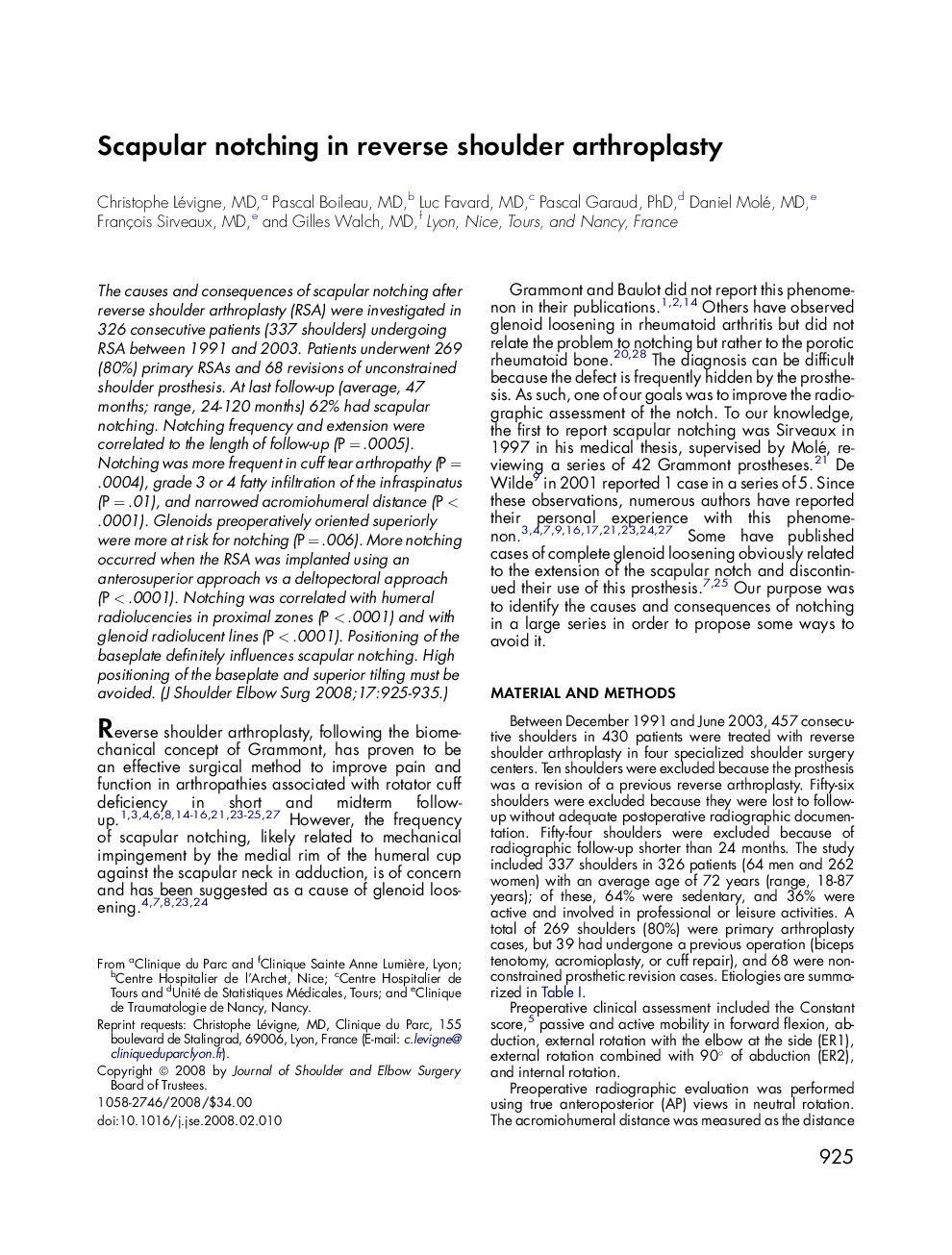| Article ID | Journal | Published Year | Pages | File Type |
|---|---|---|---|---|
| 4074735 | Journal of Shoulder and Elbow Surgery | 2008 | 11 Pages |
The causes and consequences of scapular notching after reverse shoulder arthroplasty (RSA) were investigated in 326 consecutive patients (337 shoulders) undergoing RSA between 1991 and 2003. Patients underwent 269 (80%) primary RSAs and 68 revisions of unconstrained shoulder prosthesis. At last follow-up (average, 47 months; range, 24-120 months) 62% had scapular notching. Notching frequency and extension were correlated to the length of follow-up (P = .0005). Notching was more frequent in cuff tear arthropathy (P = .0004), grade 3 or 4 fatty infiltration of the infraspinatus (P = .01), and narrowed acromiohumeral distance (P < .0001). Glenoids preoperatively oriented superiorly were more at risk for notching (P = .006). More notching occurred when the RSA was implanted using an anterosuperior approach vs a deltopectoral approach (P < .0001). Notching was correlated with humeral radiolucencies in proximal zones (P < .0001) and with glenoid radiolucent lines (P < .0001). Positioning of the baseplate definitely influences scapular notching. High positioning of the baseplate and superior tilting must be avoided.
